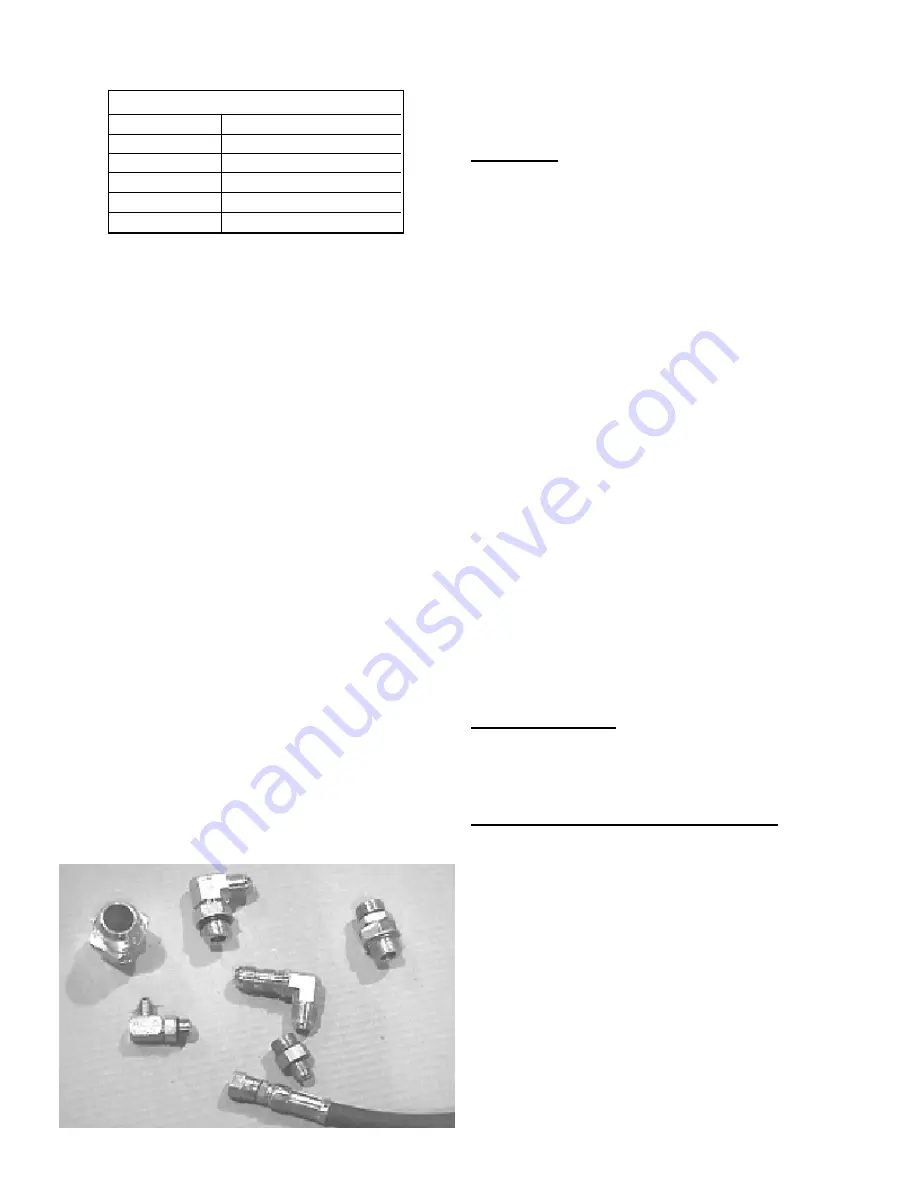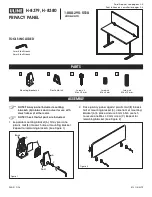
23
MAINTENANCE
HYDRAULIC SYSTEM
Interchange Chart for HDZ-46 Oil
AMOCO RYKON
MV
CHEVRON
AW HYDOIL MV 46
EXXON UNIVIS
N46
MOBIL
DTE 15 M
SHELL
TELLUS OIL T46
TEXACO RANDO
HDZ46
The hydraulic system providing hydraulic fluid to the Turf
Tender should be filled with premium grade hydraulic fluid as
recommendationed in the previous chart. The oil should be
good for at least two years unless one of the following
problems occur:
1. If the reservoir is
contaminated with excessive water
or dirt
. Hydraulic fluid can hold more than 20% water in
solution. Usually at these high levels, the fluid will appear
milky. A quick test for water at lower concentrations may
be performed outside with a hot (>300°F) sheet of steel.
With the sheet heated, drop a small amount of hydraulic
fluid in the center of the sheet. If it sputters there is a
significant amount of water in the fluid and the fluid should
be replaced.
2. If the oil has been
overheated
[above 190° F (87°C)].
The oil will have a foul odor. Do not use oil that has been
overheated. The lubricating properties have been
destroyed and acids and varnish have been created by
oxidation.
3. If a
pump or motor has had a catastrophic failure
resulting in metal fragments and particles entering the
fluid. These particles may cause the replacement
components to fail before the filter cleans up the system.
The filter in a hydraulic system does not filter out 100%
of all particles as the fluid passes through it.
After any of the above have occurred, the entire system
should be drained, cleaned, and filled with new fluid. A new
filter should always be installed after any maintenance to the
hydraulic system.
FITTINGS AND HOSES
All hoses and fittings are rated for 3000 psi or greater. All
replacement fittings and hoses must meet or exceed this
specification.
All components use either an O-ring boss or 37° flare
hydraulic fittings. Do not use pipe-threaded hoses or fittings
for replacements. Do not use Teflon tape or pipe thread
compound. These are not helpful and may cause damage to
the system.
Operation
Hydraulic flow is required to operate the Turf Tender
functions. With all Turf Tender control switches off, the oil
circulates from the hydraulic source through the electric
control valves and back to the source with little system flow
restriction.
When the conveyor switch is activated, a portion of the oil
is directed to the conveyor motor and the remainder is sent to
the exhaust port of the valve. The motor return flow is
combined with the exhaust flow and the full flow is sent to
the spinner valve.
When the spinner switch is activated, a portion of the oil is
directed to the spinner motors in series and the return flow is
again combined with the exhaust flow and returned to the
tractor.
In all switch positions, the tractor relief valve can limit the
maximum pressure by dumping oil to the tractor reservoir.
This should happen only during a malfunction wherein the
desired flow path is blocked. The engine must be shut down
immediately as all the engine power is being turned to heat
and being absorbed by the hydraulic fluid. The cause of the
blockage must be identified and eliminated before the engine
is restarted.
A few newer model tractors are capable of producing very
high working pressures. In case an operator reverses the flow
of the hydraulic fluid by hooking up hoses backwards or by
reversing the tractor controls, a check valve has been added
to the return (exhaust) line to prevent reverse pressurization
and potential failure of seals on the control valve assembly.
This check valve hangs down off the left end of the control
valve assembly.
Hydraulic Valves
The hydraulic valve package is operated by 12 VDC
solenoids which are controlled by toggle switches in the control
box. The speed of the spinners and the conveyor belt are
adjusted by the rotating knobs.
Hydraulic Valve Testing And Repair
Generally speaking, hydraulic valves operate quite
troublefree. If problems occur within a hydraulic valve, it is
generally due to contamination by either foreign particles or
water. Maintaining a clean hydraulic system will generally
prevent most hydraulic valve problems. Remember, only
perform the service you are qualified to do. If service beyond
your capability is required, contact an Authorized Dakota
dealer for his professional service.
Solid contaminants, such as broken pieces of pipe threads,
pipe sealant or tape, or rust scale, can cause valve seal
damage, scratches on spools and sealing surfaces, or system
binding and possible exhaust leaks. Such problems are most
often encountered when service work was performed on the
hydraulic system (i.e. hose replacement) and contaminants
or foreign particles where allowed to enter the system.
















































